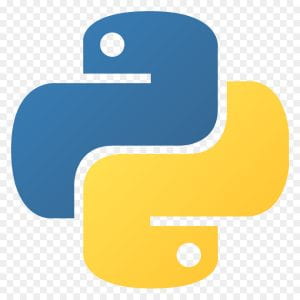Where am I now?
Since my last blog post, I have written just under 500 more lines of code for a total of 1739 lines, compared to last week’s 1295 lines. I am nearly finished the second chapter of the game, and have completely finished the basic battle function of the game. Once I am finished the second chapter of the game, I will begin work on the third chapter. Once again, I will not be writing the entirety of chapter three, only a bit, to keep the player on their toes. Also, I have decided that the logo of my video game will be the “logo” that I’ve created for myself in Drafting 9. Here is the logo:
I may choose a different colour to replace the grey parts of this logo, but as of right now, this is the logo. This logo is supposed to be a mix of the Python head in the Python logo, and a fermata in music terminology (since I have an interest in both programming and music). Here are images of both for reference:
I will use a software known as “Resource Hacker” to change the icon of the game once I convert the file to an executable (.exe) file.
How did I meet with my mentor? What happened?
Once again, I have met with my mentor last weekend and followed the same format as our previous meetings: I show him my progress, he tells me how I can improve, I ask a question, we talk about that question, and we end the meeting. The question that I asked was more focused on the battle sequence of the game:
What types of gimmicks should I have in the game to make it memorable?
One gimmick that he mentioned was in a lot of games are abilities, unique to each character/battle. I was already planning to do the same thing with my game before I implemented it, first seen in the second battle of the game. There were also other gimmicks mentioned, I will cover such gimmicks in the Beautiful Mind segment of this blog post.
Proof that I am making progress?
Below you will find an image with multiple code lines, with the code line number set to the left of the line. Note that I am using a new IDE (integrated development environment) (Visual Studio Code) so the interface looks a bit different.
What are some issues I’m running into?
I’m not running into many technical nor mental issues with the development of my game, so I am feeling very confident about my ability to deliver a polished product by the end of my timeline.
What sources am I using for my education?
I am still using the same sources for my education, Programiz, w3schools, Real Python, DataCamp, and YouTube. However, I’m beginning to let go of YouTube as a source of information and more so from Real Python. Something about the way that Real Python explains the concepts that I’m looking for just helps me understand the idea more, see the bigger picture more.
Beautiful Mind: Concepts and Alternatives
For the Beautiful Mind segment of this blog post, the topic is concepts and alternatives. As I had mentioned in the ‘How did I meet with my mentor’ segment of this post, I had asked my mentor a question about gimmicks in a video game to make it extra enjoyable and memorable. One of the gimmicks he had mentioned was abilities specific to the character/battle.
I was already planning to add this gimmick into the game, and you can actually see an option to use abilities in battles starting from the second battle. However, this wasn’t the only option we had thought of. One gimmick that I had already implemented into the game was when the game remembers the user’s past dialogue options when communicating. Note: I very much recommend that when you are finished with the demo of the game, replay the game as a new character to try to explore different dialogue options to see what comes up!
Anyways, there were many ‘concepts’ that I had to learn while working on my project, such as a Python module known as the ‘pickle’ module. While the name might sound a bit silly, the pickle module helps save information onto a person’s computer, so you might be able to tell that it would be very useful in this case. I can use the pickle function to save your game data to your own computer so that later, you will be able to load up your save file and continue.
Both the pickle module and the game gimmicks are both concepts that I had to learn about to implement into my project, but what about alternatives? What were some options that I had for my project that I rejected in favour of another?
Well, one example could be when I had to choose how to distribute my game, whether it be an executable file, or to use some sort of contemporary method (Jython for example) to convert it to a Java executable and lower the risk of it being falsely detected by an antivirus.
With Python, since it is such a popular language, there are many alternatives, with some being more efficient than others. I have chosen the ones that I think work with my project the best, but with each individual’s project, that is up to their own judgment.



